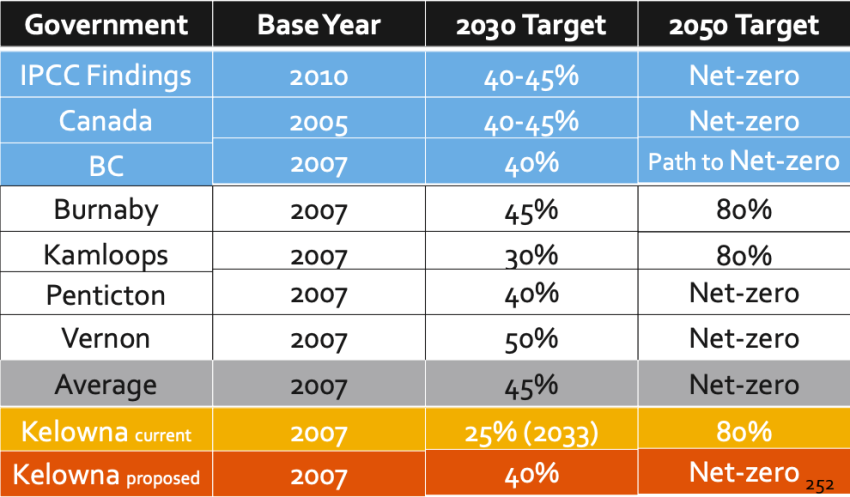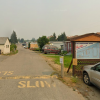On Monday, Kelowna City Council received an update about the city’s climate action plan that included an updated target to reduce greenhouse gas emissions.
Kelowna’s current climate action plan was adopted in 2018 with the goal of reducing emissions by 4%, 25% and 80% by 2023, 2033 and 2050, respectively.
Following a warning from the Intergovernmental Panel on Climate Change (IPCC) in 2018 to limit global warming by 1.5ºC, all levels of government began adopting more aggressive emission reduction targets, according to Tracy Guidi, Kelowna’s sustainability coordinator.
A 2021 federal act targets a 40-45% reduction in emissions by 2030 with the goal of net-zero emissions by 2050.
In BC, reduction targets are set at 40% and 80% by 2030 and 2050, respectively.
Vancouver and Victoria have targets to reduce emissions by 50% in the next eight years.
Guidi said that Kelowna's new target to reduce emission levels by 40% in the next eight years falls in line with these provincial and national standards.

“I’m just wondering why we’re choosing to go lower than average?” asked Councillor Loyal Woolridge.
“We opted to align with the provincial targets … because in our original 2018 plan, council chose to be a bit more pragmatic,” said Guidi.
“This gives us a bit of more flexibility going into planning for the full resiliency strategy.”
Councillor Woolridge said he understood the rationale but thought the city still needs to aim higher because "it is an emergency."
“I appreciate us setting these. I think these are more realistic targets, personally,” noted Councillor Brad Sieben. “I think we're on the right path to do what we can.”

Guidi said a recent study for 2007 and 2016 showed that the city reduced emissions by nearly 4% but those levels rose by the same amount two years later.
Transportation and buildings accounted for 55% and 37% of emissions, respectively.
Guidi added that progress was being made on a per capita basis, however. By 2018, Kelowna achieved a nearly 17% reduction in per capita emissions.
The report made six recommendations for the city to be successful in reducing emissions:
-
Transitioning to alternative transportation and EVs
-
Making new and existing buildings more efficient
-
Reducing waste and utilizing natural renewable gases
-
Creating more compact and complete communities
-
Introducing more green infrastructure
-
Taking action to reduce emission in city operations
“One thing I struggle with, that I think is missing to guide our decision making, is climate impacts on our council reports,” said Councillor Woolridge.
“(It would help) to understand when we’re making decisions what the impacts on climate will be. Whether that is approving new developments or different policies. I think that is really key.”
In mid-May, Penticton City Council began something similar. Each planning document now includes a section that details climate impacts.
















